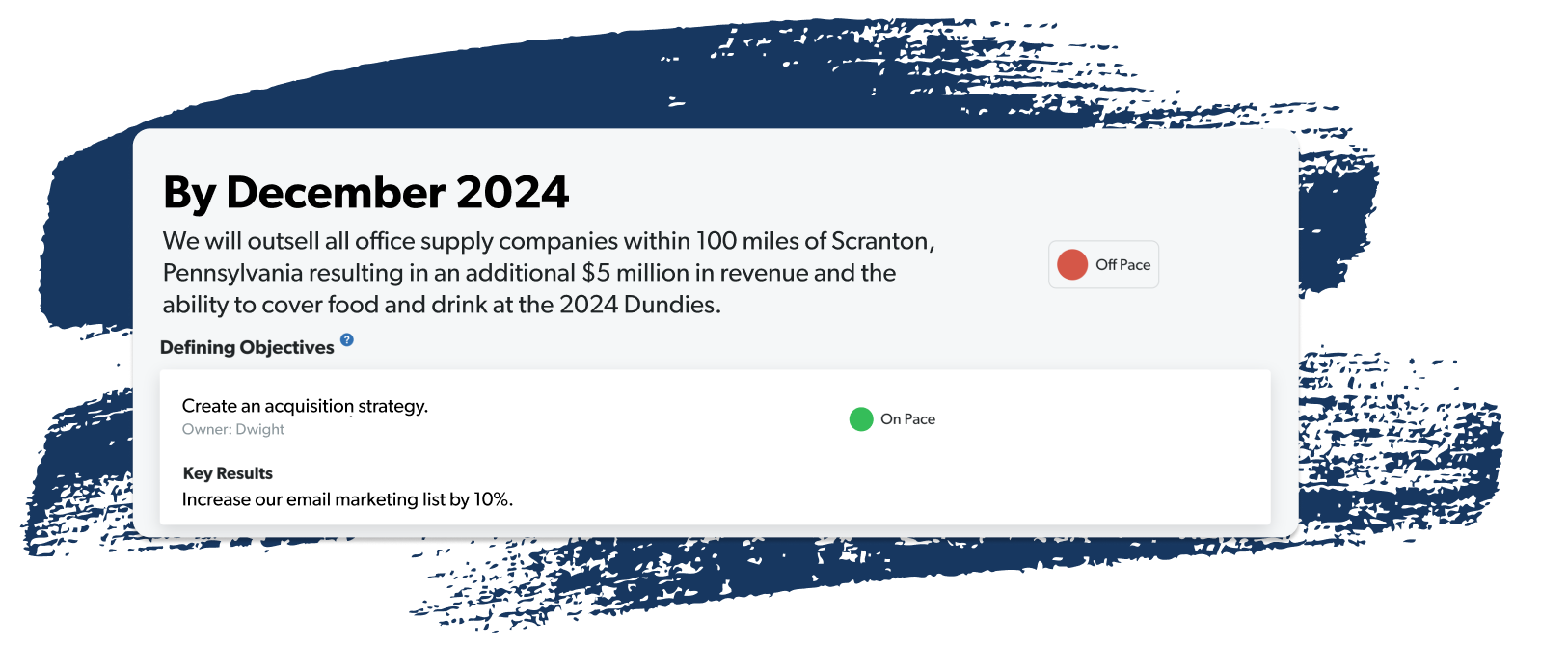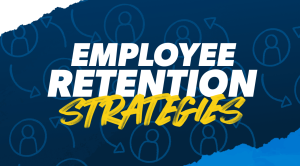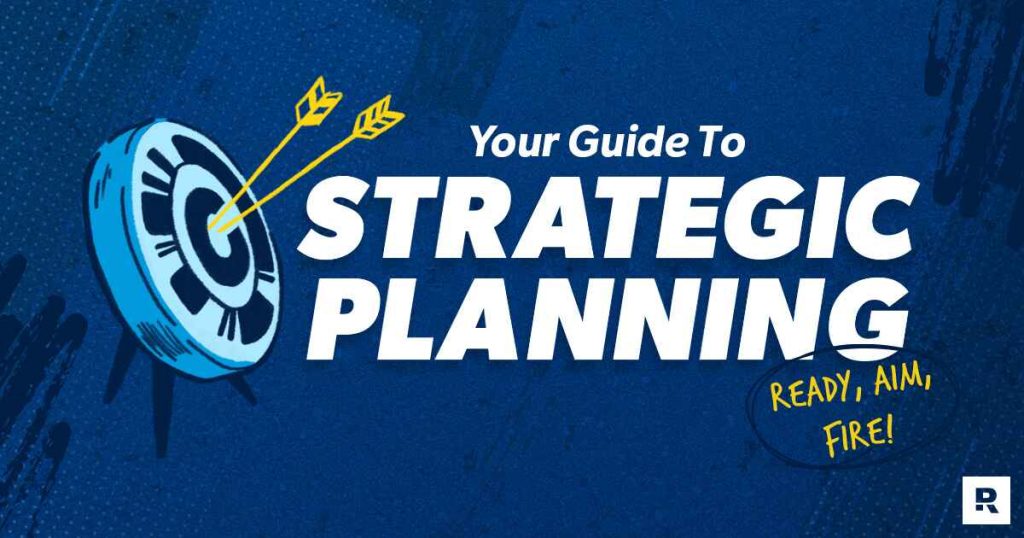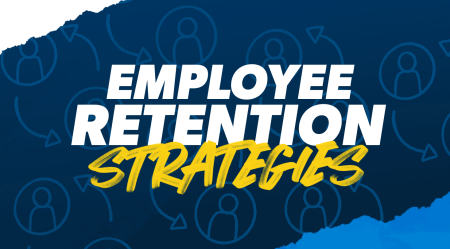What if you had access to a turbo boost with the power to turn your business into a booming success story? You do! It’s a process every successful company uses to gain momentum in their business— strategic planning. If that sounds like a lot of number-crunching and trend analysis, you’re right. But that’s not all. A good strategic plan means you can finally stop flying by the seat of your pants because you’ve taken the time to see your business clearly. Where you’re winning. Where you’re losing. And where you’re primed for growth. Even the most hard-charging leader can get behind a goal like that.
The truth is, if you want to move your business forward, you need to learn how to build an effective strategic plan. But before we get into the how-to, let’s take a look at the definition of strategic planning and why it’s important to your business.
What Is Strategic Planning?
Pull out your confetti poppers, all you movers and shakers! You’ll be happy to know what strategic planning isn’t. It isn’t some isolated retreat you take on a mountaintop with a bunch of bean counters who talk a good business game but never execute, as in ready, aim, aim . . . but never firing.
Effective strategic planning is a full-contact sport. It’s a systematic, action-oriented process for setting goals, deciding how to reach them, and giving your team the resources to achieve them, aka ready, aim, fire! Does that mean strategic planning involves looking at numbers, projections and market trends? Abso-freakin-lutely. But not just for the sake of stockpiling information. Ultimately, you’ll use all the facts, figures, fussing and discussing from your strategic planning sessions with your leadership team to set big goals and supercharge your work.
Related article: What Is a Key Performance Indicator?
Why Is a Strategic Plan Important?
To understand the importance of strategic planning, let’s take a look at an example of a well-executed, large-scale strategic plan. On the beaches of Normandy, France, World War II allied armies brought together their land, air and sea forces in the largest amphibious invasion in military history. They worked out a blueprint for how to gain traction against German Nazi forces. Less than a year later, German General Alfred Jodl signed an unconditional surrender. What drove the allied troops’ success? A unified strategic plan executed with focused intensity over time.
Related articles: Building Unstoppable Momentum
Cash Flow vs. Profit: Which Is More Important?
The fate of the free world may not depend on the success of your business. But the principle is still true: Success doesn’t happen by accident. To win in business and make a positive, long-term impact, you need a strategic plan that gets all the important areas of your business on the same page, focused on the same things.
Here’s why a well-planned strategy is important:
- It moves you from dreaming about making an impact to doing it.
- It unifies your team toward a common desired future.
- It guides you through unpredictable business waters with purpose and precision.
- It fires you up and energizes your team with fresh ideas, creative problem-solving and a roadmap to achieve big goals.
- It makes your business stronger.
Related articles:
Vision Casting: 7 Reasons Why It Matters
What Is a Vision Statement and How Do I Write One?
How to Make an Effective Strategic Plan
Whoa! Let’s get planning, right? We’re with you! So let’s dive in and clearly define your business strategy (what we call your Desired Future Dashboard). Nailing your desired future statement—along with the objectives that will help you achieve it—is critical to the strategic planning process. In fact, knowing where you’re headed and what winning looks like for your company will transform the way you do business.
You probably thought running a business sounded fun—until you realized it would actually run you. Discover the EntreLeadership System—the small-business road map that takes the guesswork out of growth.
Your Desired Future Dashboard (DFD) records your desired future statement, brings clarity and alignment for how you’ll get there (your defining objectives), and keeps you on the straight and narrow path toward your priorities (key results). Creating your DFD isn’t an exercise to do alone—so be sure to involve your key leaders as you work through the steps below.
3 Steps to Create Your Desired Future Dashboard
Here’s what a Desired Future Dashboard looks like to help you see how your desired future statement and objectives work together.

Step 1: Create your desired future statement.
At the top of your DFD is your desired future statement. Remember: This statement clarifies where you want your business to go. Here’s the desired future formula EntreLeadership uses to help thousands of small businesses craft their statements:
By [DATE], we will [CREATE OR DO THIS], resulting in [THIS].
Need an example? By December 2023, we will launch our second location in Tampa, Florida, resulting in a $1.5 million increase in annual revenue.
Clear. Simple. Effective. A desired future statement like this is easy to communicate to your team, and that makes it a powerful rallying point for your whole company.
Step 2: Set your defining objectives and key results.
Below your statement, you’ll add your defining objectives and key results. These elements lay out the plan for how you’ll reach your desired future. Your defining objectives are three to six benchmarks that answer the question, “What must be true to reach our desired future?” Don’t forget to give your defining objectives an owner. They’re not necessarily responsible for doing the work. But they are responsible for overseeing it and reporting on progress. Next, you’ll add specific key results for each objective. These are the results your team needs to achieve to reach your objectives.
Defining objectives example: Flood the funnel with new customer leads.Owner: Marketing Team
Key results examples:
- Increase top of funnel impressions by 5%.
- Increase marketing email list by 10%.
- Develop and implement a fan-activation strategy.
Step 3: Track your progress weekly.
Your DFD updates are the most important part of your weekly leadership meetings. You and your leaders will track progress and work through any extra support the objective owners need to stay on track with their key results.
Related article: 7 Keys to Developing Leaders in Your Small Business
3 Stages of a Good Strategic Planning Session
You’re ready to kick it in high gear now. Once you understand how to build an effective strategic plan with your DFD, it’s time to get ready for your first meeting of the minds. (You’ll have follow-up meetings throughout the year that will follow a similar structure.) A good strategic planning session is where you and your key leaders will come up with, track and refine your DFD.
The stakes are high. You need to minimize distractions and maximize momentum. That calls for a leadership off-site—a full-day meeting with your core leadership team away from the office. This simple change of scenery (and calendar commitment) does wonders for unifying your leadership team so they can focus on key challenges, new ideas and a plan for the next 1–18 months in your business.
Here’s a plan from start to finish to help you get the most out of your strategic planning session.
1. Before the Meeting
Get clear on what you want to accomplish during the planning session well before you get there—winging it won’t work. Once you know what you want to accomplish in the meeting—in this case, you want a DFD the entire leadership team is bought into—you’re ready to work through these important details.
Related articles:
What Is a BHAG (Big, Hairy, Audacious Goal)?
5 Simple Steps for Successful Time Management for Entrepreneurs
- Choose a location. Like we said earlier, getting out of the office allows you to stay focused and lets the rest of your team know you’re unavailable unless there’s a true emergency. Rent an Airbnb, use a church basement, or host in your own home—but don’t forget to tell your spouse!
- Get the right people there. You’ll need your core leadership team there, which consists of one member from each of the major areas of your business. Pro tip: Having a facilitator will free you up to participate in the session.
- Set ground rules before the planning session. Send an email invitation to your leadership team with your clear expectations—from being on time to leaning in and speaking into the business.
Questions in the Planning Stage
- How do you want the session led—by you or by an outside facilitator?
- What outcomes do you want?
- Which of your business drivers do you want to focus on: personal, purpose, people, plan, product or profit?
- Where do you want to do the session?
- Who do you want to be there?
2. During the Meeting
As the leader, you set the tone for the meeting. Opening with prayer or silence will help everyone center their minds and remove distractions before you dig into these steps.
Related article: How to Communicate Effectively
- Start with an icebreaker. Ask a fun question to help get everyone relaxed and engaged in the conversation. You can give one of these a try, or come up with your own: Would you rather fight one horse-sized duck or 100 duck-sized horses? What’s the weirdest item you keep by your bed? You’ll be amazed at the things you learn about your team members.
- Lead a reflection exercise. Before you can build the future of your business, you need to review the last business season and acknowledge what happened—the highs and lows and everything in between.
- Create (or review) your desired future and defining objectives. In your first off-site meeting, you’ll craft your DFD. (And you’ll want to dedicate one meeting each year to re-crafting it.) Then, at each strategic planning session throughout the rest of the year, use it to guide your progress updates and to pinpoint problems. Remember: Your DFD is your guiding star for every initiative and new idea. If an idea or tactic doesn’t drive toward your desired future, it doesn’t get added to anyone’s workload.
- Discuss key topics. Address the key topics you need to work through. (Ask your leaders for their list of issues before the meeting and continue adding to the list during your strategic planning meeting.) This is a chance for everyone to discuss challenges in the business. These tips will help you get the most out of your discussion:
– Present one key question at a time to the team.
– If you’ve talked to a team member about the topic before, give them a chance to give an update.
– Ask specific questions that drill down on the problem you need to solve or idea you want to flesh out.
– Read the room and body language. Are people open and engaged? Tired and checked out? Confused and defensive? Make sure everyone’s with you at every step.
– Pay attention to how long it’s been since someone has spoken. You can keep more dominant personalities from overshadowing those who need to process internally before sharing. - Assign action items. Never leave an off-site without laying out next steps and assigning action items to key leaders who will own the defining objectives.
Pro tip: Take a break every 1.5–2 hours.
3. After the Meeting
This is where the rubber meets the road. Schedule follow-up meetings to keep your team moving toward your desired future.
- Emphasize the importance of the first two weeks after your strategic planning session. While the business priorities you just worked through are still fresh, each core leader who was part of the planning should share the DFD with their teams. Once everyone is clear on the desired future and defining objectives, you can lay the groundwork for achieving them together.
- Lead a weekly leadership meeting. Here, you’ll track progress and flag potential business blockers before they get too big. Having a weekly meeting rhythm will also help you stick to your plans.
- Plan quarterly off-sites. For more accountability and momentum, get three more off-sites on your calendar for the year to review your desired future and pivot when needed.
Related article: 11 Productivity Tips for Small-Business Owners: Manage Your Day and Your To-Do List
Questions in the Follow-Up Stage
- Is your progress status toward your desired future green, yellow or red? (Green = on track; yellow = slightly off track; red = will not meet the goal at the current pace.)
- What blockers do you need help with?
- What additional resources do you need?
What’s Next: Ready, Aim, Fire!
Depending on the stage of business you’re in, the challenges around strategic planning are different. If you’re a Treadmill Operator or Pathfinder, you’re probably using all your energy to squeeze more out of your time and get your team moving in the same direction. Your DFD will help you stay focused on what’s important. But once you’re a Trailblazer, Peak Performer or Legacy Builder, it’s easier to work on your business rather than in it, which might make you impatient to scale your business. Your DFD will help you pace yourself so you grow the right way.
Related article: EntreLeadership: What Are the 5 Stages of Business?
If you’re not sure which stage you’re in, check out our EntreLeadership Stages of Business assessment. While you’re there, you can also sign up for EntreLeadership Elite. Elite includes the Desired Future Dashboard and Leader Meeting tools right inside the product so you can digitally organize and record your strategic planning process and the opportunities you uncover to grow your business.
Read the full article here












